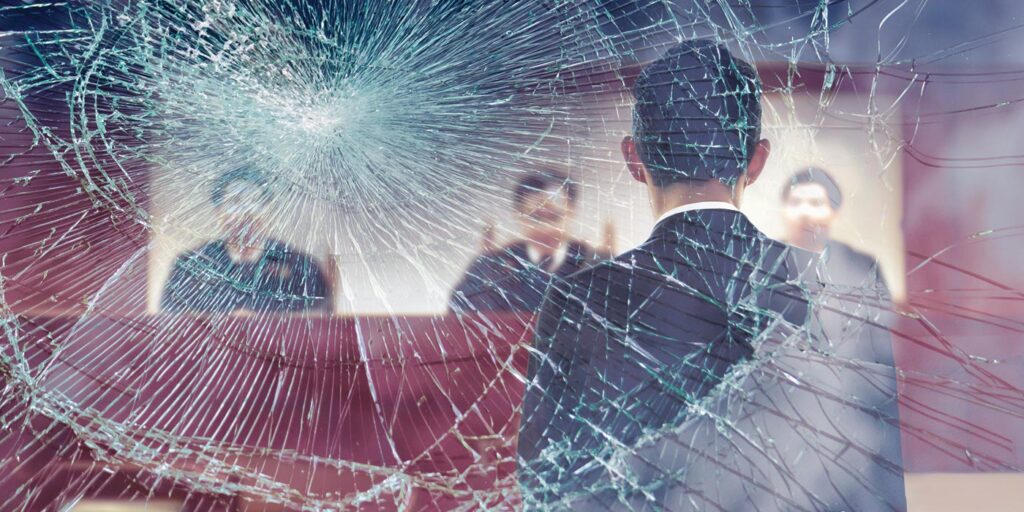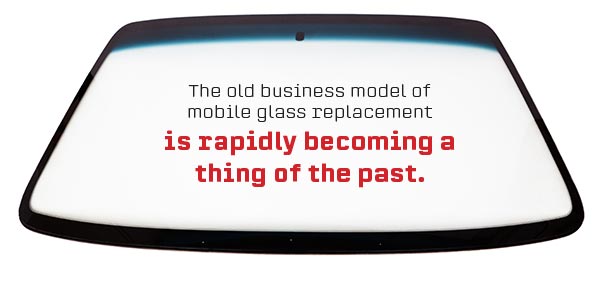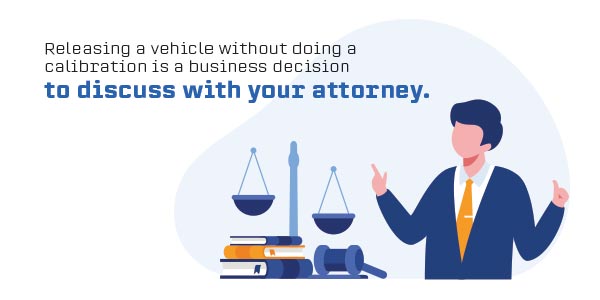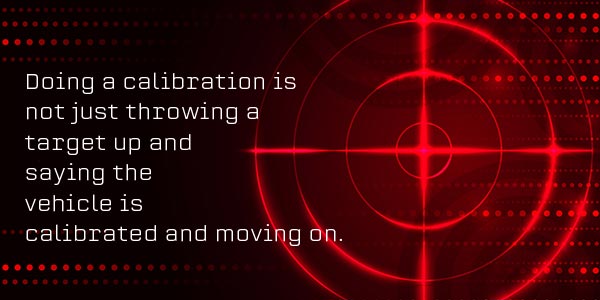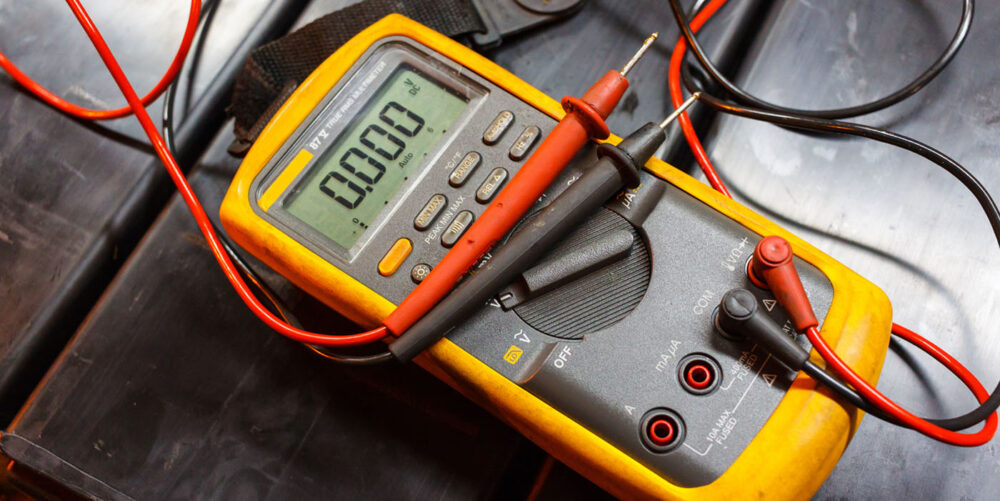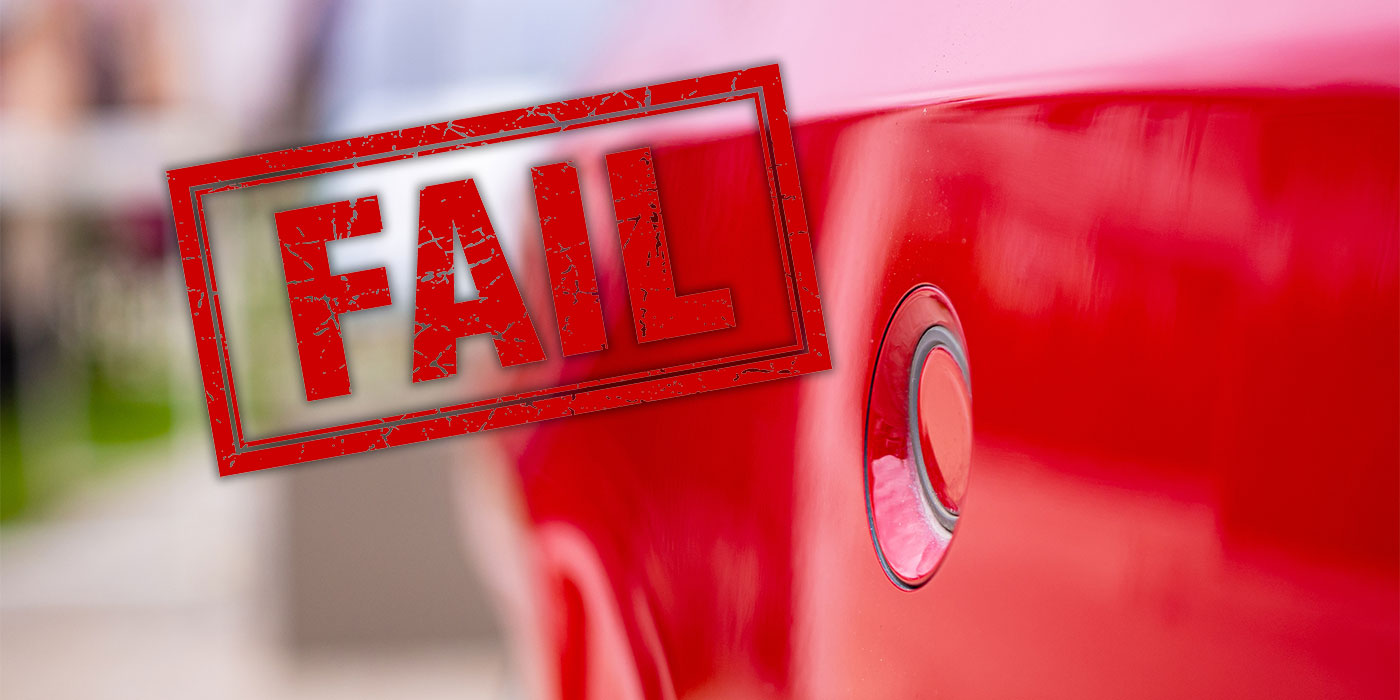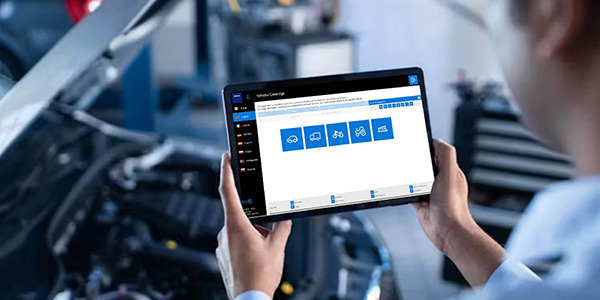The auto glass replacement industry is facing a tremendous amount of change. The old business model of mobile replacement is rapidly becoming a thing of the past. Do not misunderstand me: There will still be many times where mobile glass replacement can be done for customers. However, there is a serious need for change in the old mobile business model, given the new vehicles entering our roadways and highways.
Windshield replacement on vehicles equipped with advanced driver-assistance systems (ADAS) has changed the entire game and the way the auto glass industry operates. Calibrations of ADAS features in today’s vehicles have required glass technicians to gain new skills in the use of scan tools, targeting systems and the understanding of original equipment (OE) procedures to validate that the features are functioning correctly. As more and more vehicles are equipped with ADAS and more autonomous driving abilities are introduced, the glass industry will need to adjust to all of the new technology and learn that it is so much more than just replacing the windshield in today’s vehicles.
Glass Techs vs. ADAS Techs
I need to clarify some items before we get deep into the world of auto glass and forward-facing cameras. Notice, I did not say ADAS — there is a reason for that.
In the auto glass world, most of the concern is over the forward-facing camera mounted to the windshield. When the windshield is replaced, the camera is removed from the bracket and placed on the new windshield. If the windshield is to be removed and installed (R&I), such as in a body shop, the camera is mounted back to the windshield that was removed.
The interesting part is that many auto glass technicians are only doing the forward-facing camera calibrations; the tools and equipment are only for the forward-facing camera calibration procedures. Auto glass technicians who are doing calibrations for windshield R&I and windshield replacements are forward-facing camera specialists. An ADAS technician, however, has the training and capabilities to do all ADAS programming and calibrations, such as around view monitoring (AVM), adaptive cruise control (ACC), blind spot monitoring (BSM), cross traffic and azimuth for parking sensors, just to name a few, along with the skills to diagnose and correct other vehicle electronic repairs. I’m not trying to offend anybody, but there is a big difference in the abilities and services offered by auto glass companies and those offered by electronic repair/diagnostic companies.
Technicians should also be following OE requirements and determining if the vehicle and target plane are level for static target placements and how lighting and shadows as well as objects in the calibration zone affect cameras and radars. Doing any calibrations requires a technician to diligently follow all repair procedures exactly as required. This is not just throwing a target up and saying it’s calibrated and moving on. The liability factor is very high, as there are roughly 14 million windshields replaced per year. The number of those windshields requiring calibrations increases every day. Many of these vehicles will be in subsequent collisions. If a vehicle is not calibrated correctly, it impairs the vehicle’s ability to react correctly to road hazards it’s designed to protect the driver from. A faulty calibration places an impaired vehicle on the road. The results of the vehicle failing to react or assist the driver can be disastrous, not only for the family in the vehicle but other pedestrians or vehicles as well.
Major Liability
A technician who does calibrations requires the correct tooling, equipment and training to follow all the procedures required to calibrate a vehicle. One factor to consider is the discipline of the technician to not compromise on any calibration. Many of us have seen or heard technicians or companies not following the proper protocols and procedures. It is just a matter of time before these shortcuts become a major liability to the entire industry. Releasing a vehicle without doing a calibration is a business decision to discuss with your attorney.
With all of this vehicle interaction and our society’s new dependance on the vehicle to improve our driving skills and protect us from our own and others’ distractions while driving, attitudes are changing on who is responsible for the crash. Some in our society feel that they should not be responsible for anything, even a car crash. We could be at the point where a person could point the finger at the last company who repaired the vehicle as the reason the vehicle did not react as it was supposed to.
Vehicle manufacturers and their dealership networks are changing the game too. Automakers want to protect their investment in designing and selling vehicles. They’ve all issued statements spelling out that the tolerances required for ADAS features to work will require quality glass and precise placement of attached hardware or brackets that’s only available through their dealers. I’ve always said that the only expert on the repair of any vehicle is the engineer who designed it and all of its safety features. In the process of engineering these marvels of science, there may be things incorporated in the construction of the vehicle that you or anybody else could never have fathomed.
Between a Rock and a Hard Place
Doing the calibration correctly is paramount to the safety of everyone on the roadway, but the auto glass industry is between a rock and a hard place as far as what kind of glass to use in the windshield replacement. There is the OE glass that can be purchased from the dealer, but there is also the aftermarket glass that is available at local glass warehouses. Before ADAS, aftermarket glass was predominantly used for almost all installations, which kept the cost of the replacement down and manageable for the customer or insurer. With ADAS, those costs have changed dramatically. Even with aftermarket glass being used, add in the cost of the calibration and the price in some cases has doubled.
The OE manufacturer is the rock; the customer and insurance industry is the hard place. The cost to use OE or dealer glass raises the average windshield replacement significantly. To give you a comparison, let’s use some fictitious numbers and say the average aftermarket replacement cost of a windshield in the U.S. is around $325. Let’s say the average calibration of a forward-facing camera is around $300. Using this comparison, a vehicle windshield replacement and calibration of the camera is around $625 — which demonstrates how much the cost to replace a windshield has increased over the last few years. Now, let’s purchase the dealer windshield, which can average around $500 to $700, add the calibration of $300, and you can see the costs are significantly higher using the OE windshield. I reiterate that these prices are fictitious and only meant to show the difference. You must do your own research to validate the cost of replacing windshields. These rising costs are why many customers are choosing aftermarket glass and why the insurance industry is doing its best to control costs when using dealer glass in vehicles.
There is one other factor to consider: parts shortages and long waits for parts. This is the case in the auto glass industry too. The windshield that’s available sometimes becomes the windshield that is used in the repair to prevent loss of use of that vehicle to the owner.
Because of the OEMs’ stance that their glass must be used in vehicles equipped with ADAS (because it’s designed with features and quality manufacturing processes to specific tolerances to ensure cameras operate correctly) — and also that this issue is noted in the owner’s manuals and service departments at dealers — more and more customers are requesting dealer glass in replacements. I do believe there is fact in much of their stance, based on my past experience of seeing some substandard-quality aftermarket glass. However, I’ve also seen aftermarket companies in recent years step up their windshield manufacturing processes to create windshields that are very high-quality and calibrated with no issues. Many of these aftermarket companies supply both the OE and aftermarket glass to the auto glass industry.
The battle of which is the best glass to use has created a diagnostic nightmare for technicians completing ADAS calibrations. When a calibration fails, the first thing everyone blames is the glass. Instead of diagnosing why the calibration failed, many companies instead will remove the aftermarket windshield and replace it with a dealer windshield. Once the replacement is completed, the calibration will be attempted again to success, creating the assumption that the aftermarket glass was inferior to the dealer glass and caused the failed calibration. This may not be true; however, because no one bothered to try to find out why the initial calibration failed, we will never know the cause.
Failed Calibrations
There are many things that may cause a calibration to fail. One possibility, obviously, is the quality of the glass used in the installation. Or, the glass installed in the vehicle did not have the proper bracket alignment for the ADAS camera to mount to. In many of the cases I’ve been looking into, instead of the aftermarket glass being the cause, I’ve found that human error is more commonly the case.
When doing a calibration, technicians must be aware of the things that can cause the camera to be confused or not able to focus on the target being used. I’ve seen situations where the camera gets confused due to the reflection of the target in the hood. Once a cloth was spread out across the hood to minimize the reflection, the calibration was successful. I’ve also seen where the camera was facing a door with windows in the building where the calibration was being performed, and the glare from the sun coming through the windows confused the camera, making it difficult for it to focus on the target boundaries. One time, while cleaning the windshield prior to installation, an auto glass technician sprayed glass cleaner into the bracket opening the camera sees the roadway through. When that tech did not clean or remove the spots caused by the glass cleaner, it caused interference to the camera during the calibration.
Other failed calibrations have been traced back to technicians not correctly lining up the target by either using the wrong measurements, the floor being uneven or the calibration being done in an area where there is a drain in the floor, causing the angle of the vehicle to be different than the target. It is crucial that technicians follow the directions and know what parameters must be met for every calibration that is done on vehicles when using static targets.
When dynamic calibrations are required, it’s important for the technician to know the OE parameters necessary to achieve that dynamic calibration. The dynamic calibration requires the vehicle to be driven down the road, but many technicians fail to consider what speed the vehicle must achieve, the lines in the roadway, how many signs are along the roadway and the density of the traffic around the vehicle. Even the location of the sun during a dynamic calibration may determine whether the calibration is successful or not. Failure to understand these parameters during a drive cycle will cause a dynamic calibration to fail, and now time and effort will be needed to diagnose the problem. If aftermarket glass was used, that may lead a technician to believe the aftermarket glass is the reason the calibration failed. This will require the technician — under false pretenses — to remove the aftermarket windshield and replace it with a new OEM windshield. This might have been an unnecessary step if the technician simply took the time to diagnose the reason why the calibration failed versus assuming it was the glass.
Summary
All these factors and many more are changing the auto glass industry. It is no longer just throwing a piece of glass in a vehicle. Windshield replacement is now demanding skill sets and services that have forever altered the business model many auto glass companies used for many years. The cost of equipment and training as well as the time added to replacing a windshield with ADAS has changed and will change how all companies repairing vehicles operate and interact with their customers.

